
Quake III Arena is a 1999 multiplayer-focused first-person shooter developed by id Software. The third installment of the Quake series, Arena differs from previous games by excluding a story-based single-player mode and focusing primarily on multiplayer gameplay. The single-player mode is played against computer-controlled bots. It features music composed by Sonic Mayhem and Front Line Assembly founder Bill Leeb.

Myth is a series of real-time tactics video games for Microsoft Windows and Mac OS. There are three main games in the series; Myth: The Fallen Lords, released in 1997, Myth II: Soulblighter, released in 1998, and Myth III: The Wolf Age, released in 2001. The Fallen Lords was developed by Bungie, and published by Bungie in North America and Eidos Interactive in Europe. Soulblighter was also developed by Bungie, and was published by Bungie in North America and GT Interactive in Europe. The Wolf Age was developed by MumboJumbo, and co-published by Take-Two Interactive and Gathering of Developers for Windows and by Take-Two and MacSoft for Mac.

Battlefield 1942 is a 2002 first-person shooter video game developed by Digital Illusions CE and published by Electronic Arts for Microsoft Windows and Mac OS X. The game can be played in single-player mode against the video game AI or in multiplayer mode against players on the Internet or in a local area network. It is a popular platform for mod developers, with many released modifications that alter the gameplay and theme.

Unreal Tournament is a first-person arena shooter video game developed by Epic Games and Digital Extremes. The second installment in the Unreal series, it was first published by GT Interactive in 1999 for Microsoft Windows, and later released on the PlayStation 2 and Dreamcast by Infogrames in 2000 and 2001, respectively. Players compete in a series of matches of various types, with the general aim of out-killing opponents. The PC and Dreamcast versions support multiplayer online or over a local area network. Free expansion packs were released, some of which were bundled with a 2000 re-release: Unreal Tournament: Game of the Year Edition.
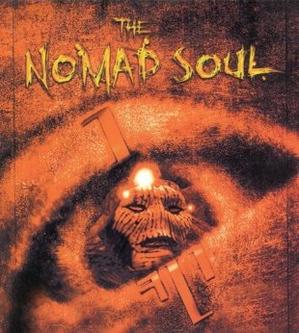
The Nomad Soul is an adventure game developed by Quantic Dream and published by Eidos Interactive. It was released for Microsoft Windows in 1999 and Dreamcast in 2000. The player can engage in unarmed and armed combat, explore the three-dimensional environment of Omikron City, and talk with non-player characters to progress the story. It follows an investigation into a case of serial killings, which unravels the supernatural truth behind the city's ancient history.

Homeworld is a real-time strategy video game developed by Relic Entertainment and published by Sierra Studios on September 28, 1999, for Microsoft Windows. Set in space, the science fiction game follows the Kushan exiles of the planet Kharak after their home planet is destroyed by the Taiidan Empire in retaliation for developing hyperspace jump technology. The survivors journey with their spacecraft-constructing mothership to reclaim their ancient homeworld of Hiigara from the Taiidan, encountering a variety of pirates, mercenaries, traders, and rebels along the way. In each of the game's levels, the player gathers resources, builds a fleet, and uses it to destroy enemy ships and accomplish mission objectives. The player's fleet carries over between levels, and can travel in a fully three-dimensional space within each level rather than being limited to a two-dimensional plane.

Kohan: Immortal Sovereigns is a real-time strategy video game developed by TimeGate Studios. It was published for Microsoft Windows by Strategy First in North America and Ubi Soft in Europe, and ported to Linux by Loki Software, both in 2001. With a high fantasy setting, the game follows immortal beings named Kohan. It features a lengthy single-player campaign and skirmish maps playable in multiplayer or against the AI. The gameplay focuses on controlling companies instead of individual soldiers, a mechanic praised by critics for eliminating micromanagement. A sequel, Kohan II: Kings of War, was released in 2004.

Rockstar Productions GmbH was an Austrian video game developer and a studio of Rockstar Games based in Vienna. Peter Baustädter, Niki Laber, and Hannes Seifert founded the studio as Neo Software in January 1993 when they neared the completion of Whale's Voyage. The game led Neo Software to early success, as did 1994's The Clue!, which sold over a million copies, and enabled the company to relocate from Seifert's house in Hirtenberg to Vienna. After Neo Software's Alien Nations sold more than a million copies in 1999, Computec Media acquired a majority stake in the company, seeking it to produce online games. It then sold the studio and several other businesses to Gameplay.com in February 2000, which sold Neo Software to Take-Two Interactive in January 2001 in exchange for a Take-Two subsidiary Gameplay.com had obtained earlier.

The Settlers II, originally released as The Settlers II: Veni, Vidi, Vici, is a city-building game with real-time strategy elements, developed and published by Blue Byte Software. Released in Germany for DOS in April 1996, and in the United Kingdom and North America in August, it is the second game in The Settlers series, following The Settlers (1993). In December, Blue Byte released an expansion, The Settlers II Mission CD, featuring new single-player campaign missions, new maps for both single-player and multiplayer modes, and a map editor. In October 1997, they released The Settlers II: Gold Edition, containing the original game, plus the Mission CD expansion, along with minor graphical enhancements and gameplay tweaks. The Gold Edition was also ported to Mac OS in 1997. In 2006, an enhanced remake, The Settlers II , was released for Microsoft Windows. In 2007, the Gold Edition was ported to the Nintendo DS, under the title The Settlers, released in Germany in July, and in the United Kingdom and North America in August. Although adapted for the dual-screen display of the DS, and with controls specifically programmed for use with the DS stylus, the gameplay, game mechanics, graphics and storyline are unaltered. In 2009, the original Gold Edition was released on GOG.com, and in 2018, it was re-released for Microsoft Windows as The Settlers II: Veni, Vidi, Vici - History Edition.

Tomb Raider: Anniversary is an action-adventure video game co-developed by Crystal Dynamics and Buzz Monkey Software. It was published by Eidos Interactive in 2007 for Microsoft Windows, PlayStation 2, Xbox 360, PlayStation Portable, Wii and mobile phones. It was later ported to OS X in 2008 and PlayStation 3 in 2011. The eighth overall entry in the Tomb Raider series and second in the Legend trilogy, Anniversary is a remake of the first Tomb Raider game, originally released in 1996.
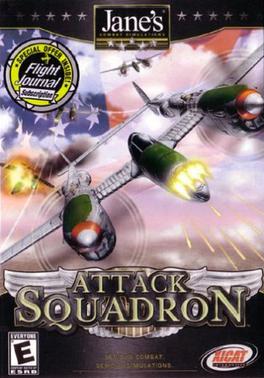
Jane's Attack Squadron is a 2002 combat flight simulator developed by Looking Glass Studios and Mad Doc Software and published by Xicat Interactive. Based on World War II, the game allows players to pilot fifteen reproductions of that era's military aircraft and to carry out missions for the Axis or Allies. Although it contains dogfights, the game focuses largely on air-to-ground combat, hence the title.

The Weakest Link is a video game based on the television game show of the same name, developed by Traveller's Tales and published by Activision under license from BBC Multimedia for the PlayStation, PlayStation 2 and Microsoft Windows platforms. In the English version, Anne Robinson, the television show's real-life host, features in the game throughout gameplay and recorded footage, beginning with the opening speech, at the beginning of each round, and during each round's voting stage. In the French version, Laurence Boccolini, the host of the show, is featured in the game for both gameplay and recorded footage.

Football Manager 2012 is a football management-simulation video game. It was released on Microsoft Windows and Mac OS X on 21 October 2011. FM12 is the eighth game in the Football Manager series.

Daydream Software was a Swedish video game developer founded in 1994. They released four games before closing in 2003.
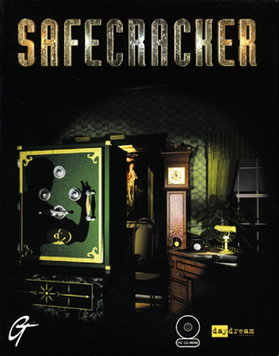
Safecracker is a 1997 puzzle adventure game developed by Daydream Software and published by GT Interactive. It casts the player as a security professional, whose goal is to infiltrate the mansion headquarters of a safe manufacturer and break into 35 of its unusual models. Each safe is guarded by a different type of puzzle, including sliding tiles, anagram codes and translations from braille. The player's progression is nonlinear: the mansion can be explored, and its safes unlocked, in multiple orders. However, the game must be completed within a 12-hour time limit.
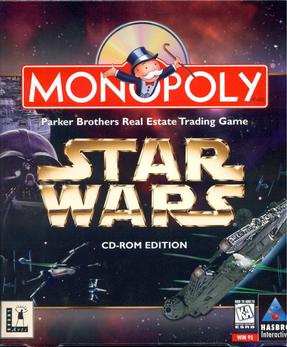
Monopoly Star Wars is the 1997 Monopoly franchise Star Wars video game based on the board game and set in the Star Wars fictional universe. It is one of many Monopoly video game adaptions. The game was developed by Artech Studios and published by Hasbro Interactive. It was released exclusively for Microsoft Windows computers. The game employs the same basic ruleset of traditional Monopoly gameplay, but the Star Wars theme includes famous characters and locales in place of the original game pieces and properties.

Traitors Gate is a 1999 graphic adventure game developed by Daydream Software. Set in a reproduction of the Tower of London, it follows the story of Raven, an American special agent trying to steal and replace the Crown Jewels of England to safeguard them from a rogue operative. The player assumes the role of Raven and solves puzzles within the Tower while evading the guards. Progression through the game is nonlinear and under a time limit: the player may solve certain challenges in multiple ways, but must win before 12 hours elapse.

Traitors Gate 2: Cypher is a 2003 graphic adventure game developed by Swedish studios 258 Productions AB and Data Ductus AB and published by The Adventure Company. It is the sequel to Daydream Software's game Traitors Gate.

Cultures: Discovery of Vinland is a 2000 real-time strategy and city-building game developed by Funatics Software and published by Phenomedia. It is the first entry in the Cultures series.
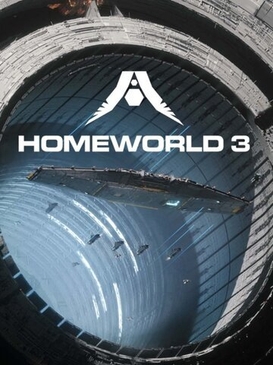
Homeworld 3 is an upcoming real-time strategy video game being developed by Blackbird Interactive and published by Gearbox Software. The game is scheduled to be released in February 2024.





















